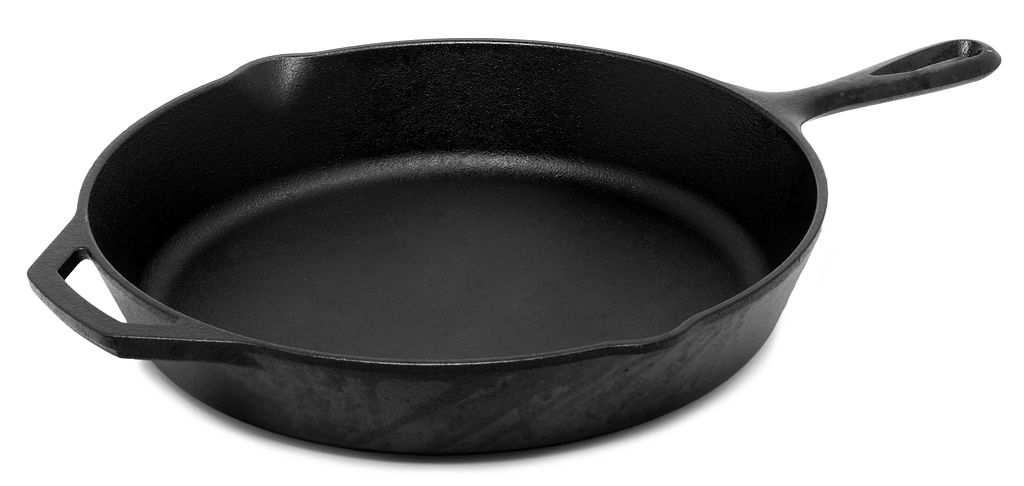I noticed that cast iron cookware seem to be making a bit of a comeback lately. And that is not a bad thing at all. My salute to the Food Network and a plethora of cooking shows out there for re-popularising cookware that has been with us for hundreds of years.
I am going to spare everyone an otherwise boring lesson on the history of cast iron cookware and get right down to the crux of it in this short article. You can find plenty of historical references on the interwebs.
Why use cast iron?
For starters, cast iron cookware can be a bitch: they are heavy and need to be well looked after. However, the benefits outweigh its physical nature. They are durable, withstand and maintain very high cooking temperatures and they retain heat very well. Translated, they make excellent cookware for stews and braised dishes and if you bake, they are excellent for cakes, breads and cobblers.
In our day and age, there are generally two types of cast iron cookware, standard cast iron or enamel coated.
Let me quickly touch on the enamel coated version first. Enameled cast iron cookware has a glass like sheen, comes in a variety of vibrant colours and generally looks really good in the kitchen. On the positive side, an enamel coating means that you need not season the metal, it is ready to use out of the box and very easy to clean. The negative part is it will set your wallet back a fair bit and it does not have one of the most important attributes of bare cast iron… the ability to withstand blistering heat and resist food sticking onto the surface. If your cooking yields simple lower temperature stews, braises or even baked / roasted dishes and you have the budget to spare, go with the enamel coated version.

If you are the sort who does a fair bit of cooking, my recommendation would be to go with bare cast iron cookware. It may be a bit hard on the eyes or even a bit of an eyesore in a beautiful modern kitchen but when it comes to producing excellent tasting food, this is definitely the way to go.
Seasoning
For starters, you will need to “season” it. That means you will need to give your cookware a stick resistant surface. How we need to do this is to apply and “cook” a layer of animal fat or vegetable oil onto your cast iron cookware cooking surface.
Personally I prefer flaxseed oil due to its temperature properties. However, regular vegetable oil is good enough for most. So here one popular method of seasoning:-
1. Give a light coating to your cookware on all sides with oil. Use a kitchen paper towel or pastry brush.
2. Bake it in a very hot oven for about half an hour to 45 minutes. Set your oven to around 430 ~ 500 degrees fahrenheit (220 ~ 240 degrees celsius)
3. Remove from oven, reapply a fresh coat of oil and place it back in the oven
4. Repeat for about 5 to 6 times

Be very careful when handling your cast iron cookware. Every inch of it will be extremely hot. The seasoning layer protects the cookware from rusting, provides a non-stick surface for cooking and prevents food from interacting with the iron of the pan.
Caring
Once seasoned, never use soap to wash your cast iron cookware. Scrub the surface gently with a stiff brush and use a bit of hot water to rinse. Dry completely. Another alternative is to apply coarse salt on the surface after cooking and wiping all the grim away with a paper towel.
If it bothers you that no soap/detergent is used, you may use a very mild soap and water to wash, dry it with a paper towel and then reapply a bit of oil back onto the surface. When you notice that your cookware is starting to lose its sheen, it’s time to repeat the seasoning process.
Benefits
The main benefit would be that you don’t need to use huge amounts of oil to brown and sear your food when cooking with cast iron. Extremely versatile, you can take it off a stove top direct into an oven, and there’s never a problem with heat retention nor switch needing to switch cookware if you happen to be using a skillet / pot with plastic handles. Food cooks beautifully and evenly with golden browns and crisp edges. Cast iron is also highly resistant to abuse from metal utensils such as spatulas, stirring spoons etc.
Cast iron surfaces are chemical free. Non-stick pans surface usually contain PFCs or perfluorocarbons. And when the surface of a non-stick pan gets scratched, the PFCs get released when high heat is applied. More recent pans may not contain PFCs (or so I hear). Nevertheless it is always better to be prudent and careful when it comes to what we put into our bodies.
If you’re completely convinced by now that cast iron is the way to go, let me put a little damper onto your enthusiasm. Remember, cast iron cookware is very heavy, requires a lot of maintenance, can be temperamental and can only be used on gas stoves or ovens. If you are a casual cook, making less than 2 to 3 meals a week, do consider carefully. Otherwise, once you get started on cast iron, you will absolutely love it.
